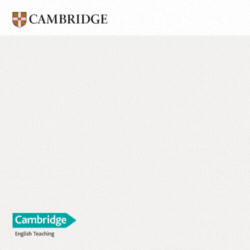The QS World University Rankings 2026 were released today. QS evaluates 1,500+ institutions across 106 countries and territories.
The high-level summary
- The Massachusetts Institute of Technology retains the top position for the fourteenth consecutive year, followed by Imperial College London in second place and Stanford University in third.
- The United States remains the most represented system, with 192 universities, and sees more institutions rise than fall in this edition.
- Germany sees more universities improve than decline, a reversal from recent years.
- Italy enters the global top 100 for the first time, with Politecnico di Milano ranked 98th.
- Saudi Arabia also breaks into the global top 100 for the first time, with King Fahd University of Petroleum and Minerals climbing 34 places to 67th .
Mainland China continues its ascent. Peking University holds on to 14th place, Tsinghua University rises to 17th, and Fudan University climbs nine spots to 30th, signaling a strong research-led push and increased academic reputation. - Hong Kong SAR is the world’s second most improved higher education system in this edition, among those with five or more ranked universities. Only Ireland improves by more.
Australia: Melbourne Holds Top Spot as Australian Universities Face Global Ranking Slide
The University of Melbourne has once again been named Australia’s top-ranked university, despite slipping six places in the latest global rankings—from 13th to 19th.
The University of New South Wales (UNSW) has also managed to hold its place among the world’s elite, dipping just one spot to 20th, while the University of Sydney has fallen out of the global top 20, landing at 25th.
In a notable development, Australia has gained a new entrant into the world’s top 100. Adelaide University, the soon-to-be Group of Eight member formed from the merger of the University of Adelaide and the University of South Australia, has debuted at 82nd. The new institution is set to officially open in January 2026.
While Australia remains one of only five countries globally to have at least two universities ranked in the top 20, the overall picture is more sobering. A total of 25 Australian universities saw their rankings decline this year, suggesting a dip in the nation’s relative standing on the global stage.
In contrast, many of Australia’s regional neighbours are gaining ground. Countries across the Asia-Pacific are seeing significant upward trends in university performance. Hong Kong SAR leads the charge, with 86% of its institutions rising in rank, followed by Thailand, Malaysia, Vietnam, and Taiwan, where more than half of universities improved their standing. Mainland China and India are also showing strong momentum, with 44% and 48% of universities respectively climbing the rankings.
Closer to home, New Zealand’s universities are also on the move, with four of the country’s eight institutions improving on last year’s results.
While Australia continues to be recognised for the quality of its higher education, the latest rankings suggest growing competition and shifting momentum in the global academic landscape.
Luke Sheehy, CEO of Universities Australia says “Our universities remain among the best in the world, despite the continuing impacts of global uncertainties and unfavourable domestic policy settings on our reputation.”
“What’s important now that the election is behind us is for the government to provide Australia’s universities with the certainty and stability they need to maintain their cutting-edge status,” he said.
Australian universities in 2026
| Australia Rank | 2026 Rank | 2025 Rank | Institution |
| 1 | 19 | 13 | The University of Melbourne |
| 2 | 20 | 19 | The University of New South Wales |
| 3 | =25 | 18 | The University of Sydney |
| 4 | =32 | 30 | Australian National University |
| 5 | =36 | 37 | Monash University |
| 6 | =42 | =40 | The University of Queensland |
| 7 | 77 | 77 | The University of Western Australia |
| 8 | =82 | Adelaide University | |
| 9 | 96 | 88 | University of Technology Sydney |
| 10 | 125 | =123 | RMIT University |
| 11 | =138 | =133 | Macquarie University |
| 12 | 183 | 174 | Curtin University |
| 13 | =184 | =167 | University of Wollongong |
| 14 | =207 | 197 | Deakin University |
| 15 | 226 | 213 | Queensland University of Technology |
| 16 | =227 | =179 | The University of Newcastle |
| 17 | =233 | 217 | La Trobe University |
| 18 | 268 | 255 | Griffith University |
| 19 | =294 | =291 | Swinburne University of Technology |
| 20 | =314 | =293 | University of Tasmania |
| 21 | 387 | =336 | Flinders University |
| 22 | 400 | 384 | Western Sydney University |
| 23 | =410 | =396 | University of Southern Queensland |
| 24 | =423 | =436 | Murdoch University |
| 25 | =440 | =445 | James Cook University |
| 26 | =487 | =516 | Edith Cowan University |
| 27 | =494 | =403 | University of Canberra |
| 28 | =499 | =495 | Central Queensland University Australia (CQUniversity) |
| 29 | =584 | 621-630 | Charles Darwin University |
| 30 | =591 | =587 | Bond University |
| 31 | =638 | =576 | Southern Cross University |
| 32 | 741-750 | 741-750 | Victoria University |
| 33 | 851-900 | 901-950 | Australian Catholic University |
| 34 | 951-1000 | 851-900 | Charles Sturt University |
| 35 | 1001-1200 | 1001-1200 | University of New England |
| 36 | 1201-1400 | 1401+ | The University of Notre Dame, Australia |
Australia in Decline
This year’s global rankings reveal a downward trend for the majority of Australian universities, with many slipping in both overall institutional performance and key metrics.
The declines come at a challenging time for the sector, following ongoing claims of underfunding, widespread restructuring, and waves of redundancies across the country’s higher education institutions.
Compounding the issue, international education has been thrust into the political spotlight over the past year, with student visa settings, housing pressures, and migration policy dominating national debate.
As a result, critical measures such as the ability to attract top international faculty and deliver strong graduate outcomes are under renewed scrutiny—raising questions about Australia’s ability to remain competitive in an increasingly global education market.
Jessica Turner, CEO of QS saying, “International students have been drawn into a wider national debate in Australia around migration and housing, where they are sometimes perceived as contributing to systemic pressures. It is essential to recognise their broader value to Australian campuses and communities, not only as a significant economic contributor, but as a vital source of cultural diversity, talent, and global engagement and soft power.”
“Australia has earned an enviable reputation for delivering world-class learning experiences and remains a destination of choice for international students, leading academics, and global research partners, all of which have underpinned the positive global standing of its higher education sector. In what has been a turbulent year for Australian higher education, universities are calling for sustainable research funding models and greater policy certainty around international education. These are critical to safeguarding and strengthening one of Australia’s greatest national assets, particularly as the country faces growing competition from across the APAC region,” she said.
The following table shows Australia has the third largest lower percentage, second only to Australia and the Russian Federation.
| Locations with the highest ratio of universities that have dropped in the rank in 2026 (with at least eight ranked universities) | |||||||
| Location | No universities ranked | No of universities with lower Year-on-Year rank | Lower % | No of universities with same Year-on-Year rank | Same % | No of universities with higher Year-on-Year rank | Higher % |
| Austria | 8 | 7 | 88% | 0 | 0% | 1 | 13% |
| Russian Federation | 40 | 34 | 85% | 6 | 15% | 0 | 0% |
| Australia | 36 | 25 | 69% | 3 | 8% | 7 | 19% |
| Argentina | 18 | 12 | 67% | 2 | 11% | 3 | 17% |
| Japan | 47 | 30 | 64% | 14 | 30% | 2 | 4% |
| Sweden | 8 | 5 | 63% | 0 | 0% | 3 | 38% |
| United Kingdom | 90 | 54 | 60% | 11 | 12% | 24 | 27% |
| Mexico | 22 | 13 | 59% | 9 | 41% | 0 | 0% |
| Finland | 9 | 5 | 56% | 0 | 0% | 4 | 44% |
| Canada | 29 | 16 | 55% | 2 | 7% | 11 | 38% |
The 2026 QS ranking information can be found here.

















